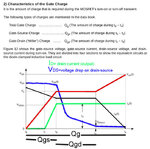ian123
Junior Member level 3
hi
i have designed a mosfet hbridge but am having heating problems please could you help with this.
the hbridge consists of rectified mains voltage with 330 uf 400v cap on the high side the polarity is being switched every two seconds.
the lo side is on for 2 sec and the high side is being pwm at 94hz for the two secs then switched off and the other side is switched on.
the load does not go over 3 amps.
i have two problems the bridge rectifier gets hot (8Amp 600v). the mosfets get hot after a while.
the load is passive but the current changes all the time.I am inserting two probes into a gel which will warm up over time.
the mosfets are on small heatsinks due to my reasoning that they are no where near their limit.
i have designed a mosfet hbridge but am having heating problems please could you help with this.
the hbridge consists of rectified mains voltage with 330 uf 400v cap on the high side the polarity is being switched every two seconds.
the lo side is on for 2 sec and the high side is being pwm at 94hz for the two secs then switched off and the other side is switched on.
the load does not go over 3 amps.
i have two problems the bridge rectifier gets hot (8Amp 600v). the mosfets get hot after a while.
the load is passive but the current changes all the time.I am inserting two probes into a gel which will warm up over time.
the mosfets are on small heatsinks due to my reasoning that they are no where near their limit.
